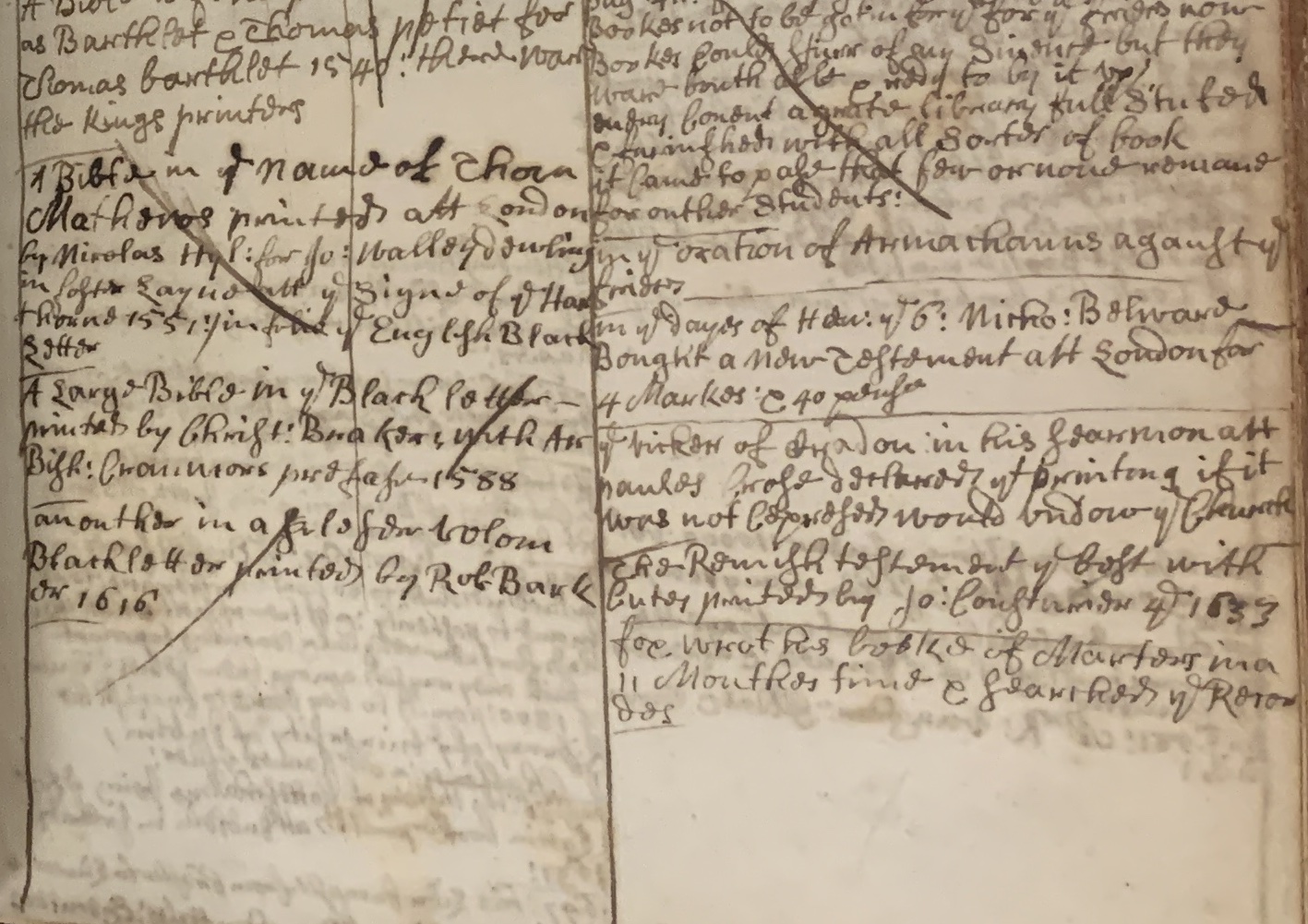Seventeenth-century commonplace books and recipe books often have partial indexes. The compiler would collect new prescriptions, descriptions of books, good ideas, or observations. And then, at some later date, they would go back through their collection and make a topical index.
Contemporary writers, including John Locke, describe indexing like this in instructions for making commonplace books. What I’ve been thinking about is how people marked their entries as entered into their index. You can see check marks, crosses, and slashes through entries entirely to indicate they’ve been indexed.
Above you can see John Bagford’s commonplace book (Uk Sloane 893 (39)), in which he uses the slash method. He wrote entries about books he saw in his waste book (Uk Sloane 923), which he copied into this commonplace book above. He also uses crosses and marks along the margin to indicate he has indexed the item.
His slash, however, seems to indicate not that the entry has been indexed, but that it has been transferred. This is an established convention in Venetian double-entry bookkeeping.
Luigi Pacioli writes about a merchant keeping a memorandum book, or waste book, in which they record their day-to-day activities. At the end of the day when they have time, they write their waste book entries more clearly in their journal and mark them out with a slash. The slash prevents them from copying the entry twice, which would disrupt their accounting.
Similarly, as the entries in the journal book accumulate, the merchant would transcribe entries into the ledger book. The entries in the journal book would be marked through with a slash too to indicate that they had been transferred.
As Pacioli writes, you can recreate all three books from either the complete waste book or the complete journal book. You can also check your ledgers, find errors, or find entries you missed. Establishing a standard system of marking means you can audit your books.
Here, however, we see John Bagford using the same model: one entry is transferred from the waste book to the journal and from the journal to a ledger book (now lost, but which was transcribed by a clerk into Uk Sloane 1085).
This is writing as banking. Bagford, like many antiquarians and virtuosi of the time, used general accounting methods to keep his own notes straight. The slash indicates that an entry has been copied to the next book, but does not obscure what it says. This way, you can refer to your old notes, but feel secure that you’ve copied them into your next project.
Now we can still go back and check his notes.
